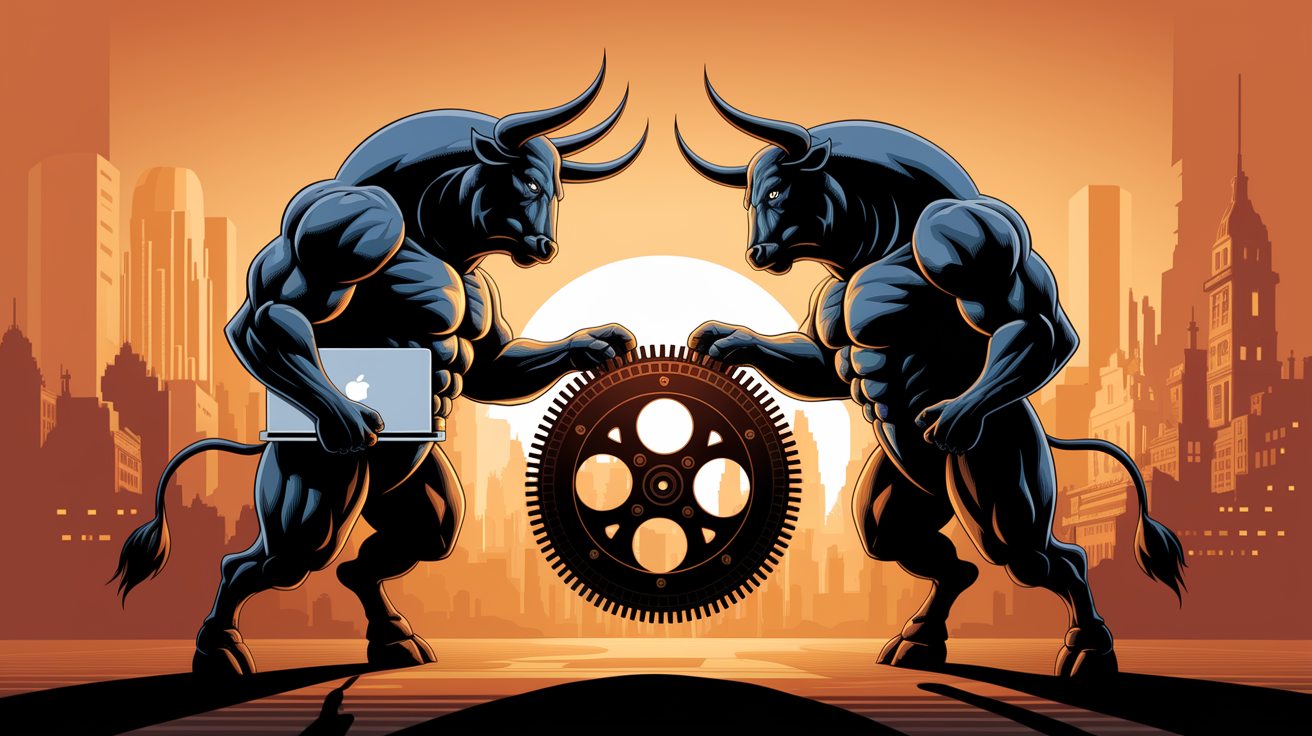In the world of investments, the Nasdaq 100 and the Dow Jones represent two different realms: the dynamic and technological future and the solid and traditional past. Both indices offer unique perspectives and opportunities for investors looking to bet on growth or stability. This article explores how investment strategies are influenced by the differences between these two indices and the role volatility plays. Discover why the choice between technology and traditional industries means more than just selecting stocks.
Adapting Investment Strategies Between Technological Focus and Tradition: Nasdaq 100 and Dow Jones

The constant change of the global economy, driven by technological innovations and established industries, is well represented by the Nasdaq 100 and Dow Jones indices. In the financial world, these indices embody contrasting investment perspectives, highlighting risks and opportunities across different sectors.
Investors who choose the Nasdaq 100 are primarily attracted by the dynamics of the technology sector and growth. The index comprises the 100 largest non-financial companies listed on the Nasdaq, emphasizing the dominance of industry leaders like Apple, Microsoft, and Alphabet. Due to its focus on technology, seen as the engine of modern innovation, the Nasdaq 100 offers high return potential. However, this perspective comes with increased volatility, resulting from the pronounced reactions of tech stocks to market developments and strategic announcements. In this context, day trading and swing trading are popular strategies as they capitalize on the rapid price movements of stocks. Here, rigorous risk management proves essential to minimize potential losses through stop-loss orders and prudent position sizing.
In contrast, the Dow Jones Industrial Average is often considered a safe haven that promotes a more stable investment strategy. With only 30 stocks in its portfolio, belonging to the largest and most renowned U.S. companies, this index offers a diversified mix of sectors such as consumer goods, healthcare, and finance. Long-term investors, interested in steady and reliable capital growth, find the Dow an attractive opportunity to invest in established blue-chip companies. Additionally, this index provides valuable diversification, which not only minimizes risk but also correlates with economic sentiment, offering significant insights into the overall economic situation.
The corresponding investment approach strongly depends on the investor’s risk profile. While more risk-tolerant investors can benefit from the rapid gains of the Nasdaq, risk-averse investors prefer the stability and continuity of the Dow. However, a well-crafted diversification strategy that combines investments in both indices could achieve an optimal balance between risk and growth, benefiting from both technological innovations and the solidity of traditional industries. Careful risk management remains fundamental for any investment approach.
Influences of Market Volatility and Characteristics: Technology vs. Tradition

The comparison between the Nasdaq 100 and the Dow Jones Industrial Average (DJIA) offers fascinating insights into the differing dynamics between the technology industry and traditional industries. These two major indices differ not only in their composition but also in their specific behavior regarding volatility and market characteristics.
The Nasdaq 100 is an emblematic example of an index primarily characterized by technology-oriented and growth companies. Companies such as Apple and Microsoft, which are also part of the Dow Jones, dominate the landscape to a greater extent, while other companies distinguished by innovation expand the index. This strong technological orientation contributes to higher volatility, as tech stocks tend to react more quickly to changes in market conditions, innovation trends, and investor sentiment. Developments such as revolutionary technologies or geopolitical tensions often lead to significant price movements within the Nasdaq 100.
In comparison, the Dow Jones Industrial Average presents itself as more stable and less subject to rapid price fluctuations. This stability derives from its composition of 30 large established companies across various sectors, which produces a natural diversification of risk. The DJIA considers not only technology giants but also companies in consumer goods and industrial sectors. This diversification means that the Dow Jones is more affected by macroeconomic factors, such as interest rates or overall economic policy, rather than short-term innovation trends.
The market characteristic of the Nasdaq 100 can be best described as representative of the innovative capacity of the U.S. economy. This index reflects the growth potential of the technology sectors, in line with a digital future. In contrast, the Dow Jones symbolizes the traditional U.S. economy and its ability to provide stability and continuity in an often unpredictable economic environment.
In conclusion, it is clear that the choice between the Nasdaq 100 and the Dow Jones is not just a matter of sector affinity but also depends on risk tolerance and investment goals. While the Nasdaq 100 impresses with its high volatility and innovative potential, the Dow Jones, with its broad mix of sectors, offers a solid foundation for investors seeking long-term stability.